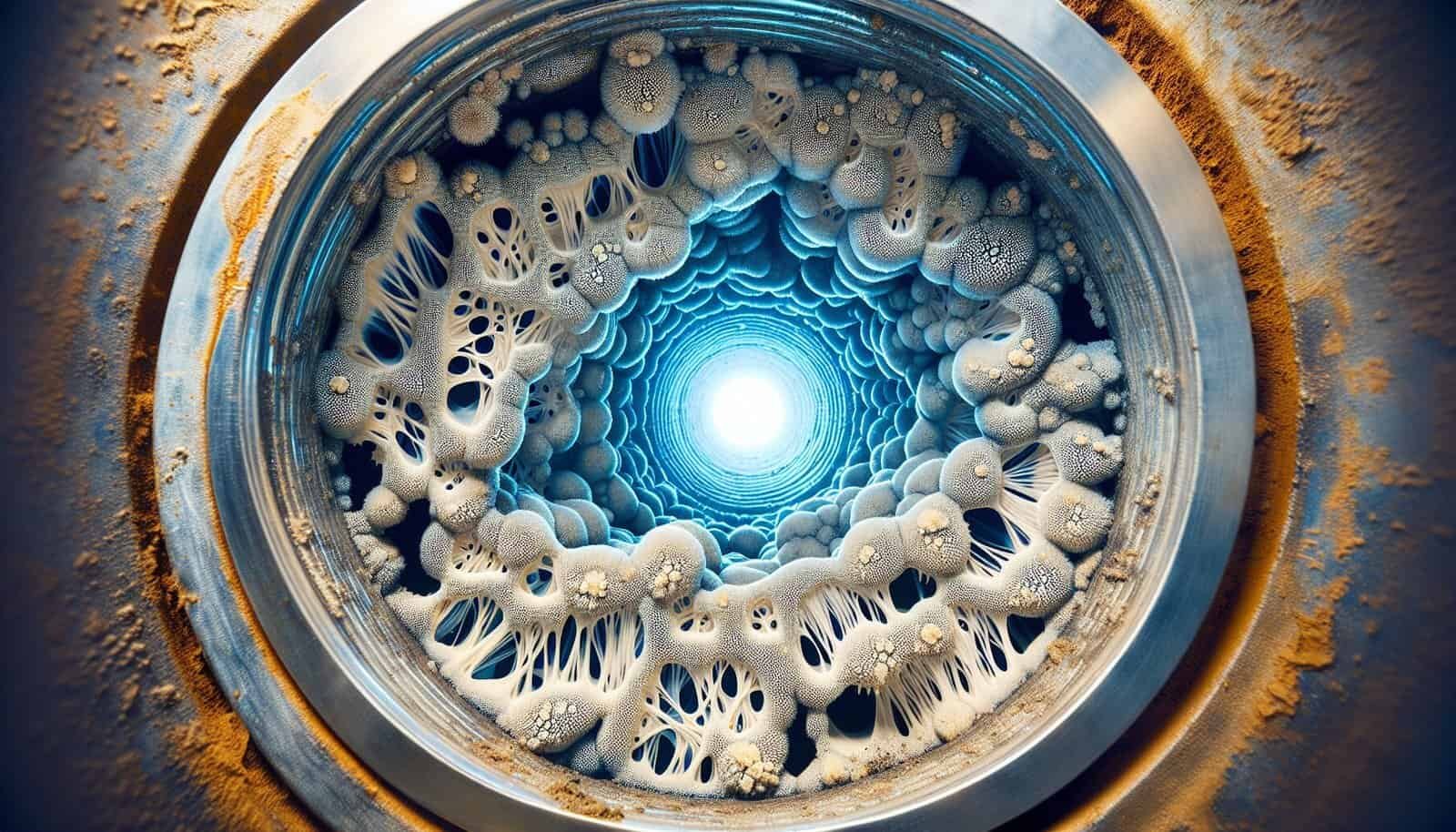Have you ever wondered what might be lurking in your well water system? If you’re like many homeowners relying on well water, you might be concerned about biofilm—a term that seems simple yet is complex and worth understanding to maintain a healthy water supply. Let’s embark on a journey to explore what biofilm is, how it comes to be in your well systems, why it matters, and what you can do about it.
What is Biofilm?
Biofilm is a gathering of microorganisms where cells stick to each other and often live on surfaces. In well systems, it typically consists of bacteria and other microbes that adhere to the piping and other components. The cluster of these microorganisms forms a slimy layer, which is commonly referred to as biofilm.
Composition of Biofilm
The primary components of biofilm include:
- Microorganisms: These are bacteria, fungi, and protozoa that create the initial formation of biofilm.
- Extracellular Polymer Substances (EPS): These are natural polymers secreted by the microorganisms that help them stick to surfaces and to each other.
- Other substances: Elements from the surrounding environment, such as minerals found in well water, can also be part of the biofilm structure.
Formation of Biofilm
Biofilm formation is a complex process that occurs in multiple stages:
- Attachment: Microbes attach to a surface.
- Colonization: As more microorganisms attach and grow, they start forming microcolonies.
- Development: These colonies grow and become more complex, developing the typical slime layer.
- Maturation: The biofilm reaches a stable state and becomes more resistant to environmental changes.
Understanding these stages is crucial because they highlight why biofilms are so stubborn and challenging to remove. The strong adhesion of the microorganisms and the protective barrier formed by EPS make mature biofilms resistant to many traditional cleaning methods.
Causes of Biofilm in Well Systems
The conditions in a well system make it almost a perfect environment for biofilm formation. Let’s explore the critical factors that contribute to the occurrence and persistence of biofilm in well systems.
Natural Occurrence of Microorganisms
Wells provide a natural habitat rich in various microorganisms. These originate from soil, groundwater, and even the air. Once they find their way into your well, they can start the biofilm formation process on the surfaces within the well and connecting pipes.
Nutrient Levels
For biofilm to form, there needs to be a source of nutrients. These nutrients can be organic material present in the water supply, like decaying plant matter or other naturally occurring substances.
Temperature and pH
- Temperature: Warm temperatures can accelerate the formation of biofilms. However, most biofilms can thrive across a range of temperatures.
- pH Levels: The acidity or alkalinity of your well water can also impact the growth of biofilms. Typically, microorganisms in biofilms prefer neutral pH levels but can adapt to a wide range.
Stagnant Water
Stagnant water is a breeding ground for biofilm. If your well system has areas where water circulation is poor, these spots can become hotspots for growth. This situation is often found in systems with low water usage or long stretches of piping.
Surface Materials
The materials used in your well system can influence biofilm development. Some materials, like certain plastics, may offer better surfaces for biofilm attachment than metals, although biofilms can form on virtually any material over time.

Why Biofilm in Well Systems is a Problem
Understanding why biofilm is problematic necessitates a closer look at its impact on your well system and health. While a natural occurrence, biofilm can lead to several significant issues.
Health Risks
Some microorganisms in biofilm may be pathogenic, posing serious health risks if they contaminate your drinking water. Colonies of bacteria such as E. coli, Legionella, and others can form part of biofilms and contribute to waterborne diseases.
Impact on Water Quality
Biofilms can degrade the quality of your water. They may affect the taste and odor, making the water unpleasant to use. Moreover, they can lead to the discoloration of the water, turning clear water into a murky or discolored liquid.
System Efficiency
Biofilm buildup can hamper the efficiency of your well system. The blockage from biofilms can reduce water flow, increase pumping costs, and in some cases, lead to piping or equipment damage. The slimy layers can lead to increased friction and energy consumption to maintain a regular water supply.
Treatment and Maintenance Costs
Dealing with biofilm can lead to considerable treatment and maintenance expenses. Regular disinfection, cleaning, and sometimes even replacing parts of your well system can be needed, all of which add to the operational costs of maintaining a well.
How to Detect Biofilm in Well Systems
Since biofilm in well systems is often invisible to the naked eye, detection can be tricky. Let’s explore ways you can identify potential biofilm presence in your system.
Visual Inspection
While biofilms themselves might not be visible, you may notice symptoms of their presence, such as:
- Murky water
- Unusual odors
- Slippery surfaces inside piping or well components during routine maintenance
Water Testing
Regular testing of your well water is crucial. Look for changes in microbial counts, which can indicate a growing biofilm presence. Testing should be comprehensive enough to identify bacteria and other microbes contributing to biofilm growth.
Professional Inspection
Hiring a specialized contractor to inspect and evaluate your well system can be invaluable. They can use specialized equipment to assess and identify problem areas more effectively than what you might be able to do independently.

Prevention Strategies for Biofilm Control
Preventing biofilm is usually more efficient than dealing with it after it has formed. Here are some strategies that can help minimize biofilm formation in well systems:
Regular Maintenance
Routine inspection and cleaning of your well system can prevent biofilm from reaching problematic levels. Identify and repair any issues early to mitigate new biofilm growth.
Water Treatment Solutions
Implementing water treatment options like UV treatment, chlorination, and filtration systems can help ensure your well remains a hostile environment for biofilm formation. These treatments can maintain low microbial counts and reduce nutrient levels that lead to biofilm growth.
Reducing Stagnation
Increasing water flow can significantly reduce the opportunity for biofilm formation. Position piping or pumps to encourage movement, especially in those stagnant areas prone to biofilm growth.
Surface Coating Solutions
Consider using surface coatings that are designed to be biofilm resistant. These coatings can change the surface properties of the material in your well system, making it more challenging for biofilm to adhere to and colonize surfaces.
How to Remove Established Biofilm
If prevention wasn’t entirely successful and you’re dealing with established biofilm, don’t worry. There are effective ways to clean and remove biofilms from well systems.
Mechanical Cleaning
Physical removal involves scrubbing and washing down components to remove biofilm. For pipes, there are mechanical brushes and pigs that can navigate the system and scour off the biofilm layer.
Chemical Treatment
Chemical treatments involve using strong cleaners that can dissolve or dislodge biofilm. These treatments are generally effective but must be used carefully to avoid damaging your well system or contaminating the water supply.
Thermal Treatment
Introducing high temperatures can sometimes disrupt biofilm structure. However, this method involves safety and logistical considerations, especially in terms of raising water temperature in sections of the system that handle biofilm.
Professional Services
Given the resistance of biofilms, sometimes the best course is to get help from professionals. They have specialized tools and treatments that are more effective for thorough removal.

Importance of Monitoring and Ongoing Management
Once you have dealt with a biofilm problem, the next step is ensuring it doesn’t return with a vengeance. Here’s how you can manage and monitor your system over the long term.
Regular Testing
Continue regular water testing as part of your well maintenance routine. Consistent testing will help you spot minor issues before they escalate into major biofilm problems.
System Upgrades
Consider upgrading older parts of your well system with modern and more biofilm-resistant materials. Innovations in materials science have led to more biofilm-resistant construction materials.
Educational Awareness
Staying informed about biofilm and the latest well maintenance technologies can help you adapt and respond to any issue more efficiently before it escalates. Join community groups or forums where well system maintenance is discussed to stay abreast of new information and tactics.
Conclusion
Biofilms sound simple but can cause considerable issues in well systems if left unchecked. Understanding their formation, factors that encourage their growth, and how to combat them through both prevention and removal strategies is crucial in maintaining the quality and efficiency of your well water system. By taking a proactive approach and integrating some of these insights into your well maintenance routine, you’ll be able to savor clean, biofilm-free water from your well for years to come.

